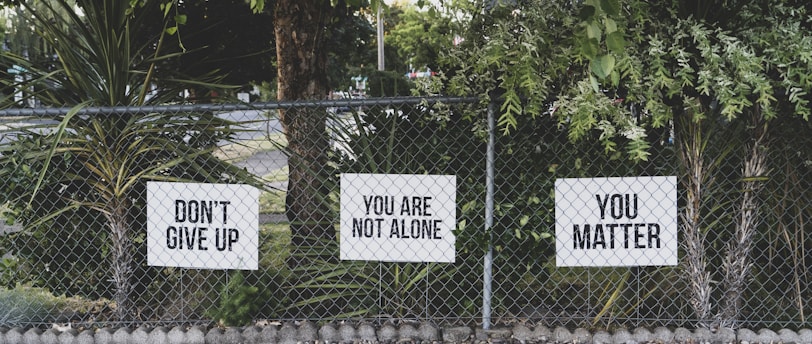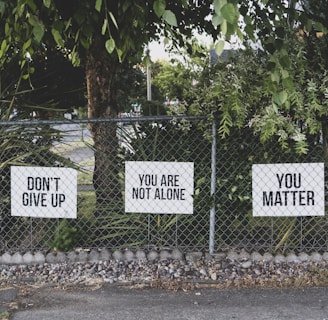Childhood Trauma Recovery: Steps to Heal and Thrive
Have you ever wondered how childhood trauma affects adulthood? We all carry experiences from our early years, but for some of us, these memories can be deeply painful and impact our lives in profound ways. Childhood trauma recovery is a journey of healing and growth that many of us face, and it's important to understand that there is hope and support available. In this article, we'll explore the stages of healing from childhood trauma and discuss effective strategies to deal with its long-lasting effects. We'll delve into how to heal from child abuse, examine therapy options for childhood trauma in adults, and look at ways to overcome the symptoms that often persist into adulthood. Our goal is to provide you with practical tools and insights to help you on your path to recovery, empowering you to thrive despite past experiences.


Understanding Childhood Trauma
Childhood trauma is a deeply impactful experience that occurs before adulthood. It's crucial to recognize that more than 60% of adults have faced at least one adverse childhood experience (ACE), with 16% dealing with four or more 1. These experiences can have lasting effects, shaping our lives well into adulthood.
Types of Childhood Trauma
Childhood trauma comes in various forms, including:
Abuse (physical, emotional, or sexual)
Neglect
Household challenges
Community incidents
Natural disasters
Witnessing violence
Medical trauma
Each type of trauma can affect a child differently, depending on factors like their developmental level, cultural background, and available resources 2.
Long-term Effects
The impact of childhood trauma can be far-reaching. Adults who experienced trauma as children are at higher risk for:
Mental health issues: Depression, anxiety, and PTSD
Physical health problems: Heart disease, diabetes, and obesity
Behavioral challenges: Substance abuse and risky behaviors
Relationship difficulties: Trust issues and attachment problems
A study involving 911 students found that those who experienced childhood trauma were more likely to develop fearful, preoccupied, or dismissive attachment styles in adulthood 2.
Recognizing Trauma Symptoms
Identifying trauma symptoms is crucial for early intervention and healing. Common signs include:
Sudden new fears or separation anxiety
Sleep disturbances and nightmares
Loss of interest in activities
Difficulty concentrating
Unexplained anger or irritability
Somatic complaints (e.g., stomachaches, headaches)
It's important to note that trauma responses can vary greatly between individuals. While some may develop post-traumatic stress disorder (PTSD), others might experience different manifestations of trauma 3.
The Journey to Healing
Acknowledging the Past
We begin our journey to healing by acknowledging our past experiences. It's crucial to understand that pushing trauma or emotions down doesn't make them disappear. Instead, recognizing our trauma helps us better comprehend our mental health as a whole 4. This process allows us to connect seemingly unrelated challenges in our lives to our past experiences, paving the way for healing.
Self-validation is a powerful tool in this process. When we feel the urge to deny or gaslight ourselves, we must pause and affirm, "What happened to me was traumatic, and I'm allowed to feel this way" 5. This self-acknowledgment is a vital step towards healing, even if others don't validate our experiences.
Seeking Professional Help
Professional help plays a crucial role in our healing journey. Therapy can assist us to process traumatic events, understand them better, and learn effective ways to heal 6. While memories of trauma often remain, therapy can help reduce their control over our emotions, making them less disruptive to our daily lives.
Various types of therapy are available, including cognitive processing therapy, trauma-focused CBT, play therapy, and art therapy 6. Mental health professionals can guide us to the most effective type of therapy for our specific needs. Remember, healing looks different for everyone, and that's okay 4.
Building a Support Network
Creating a strong support network is essential for our recovery. While trauma can disrupt our connections with others, feeling connected is vital for our health and wellness 7. Building or expanding our support system might feel uncomfortable at first, but it's a crucial step in our healing process.
We can start by identifying people in our lives with whom we already feel some degree of safety. These could be family members, friends, coworkers, or neighbors 7. Support groups can also be beneficial, providing a safe, non-judgmental space to share experiences and feel less isolated 8.
Remember, we thrive when supported by nurturing people. As we build our support network, we're taking significant steps towards healing and thriving despite our past experiences.
Effective Coping Strategies
Mindfulness and Meditation
We've found that mindfulness-based approaches can be powerful tools in our journey to heal from childhood trauma. By practicing mindfulness, we learn to pay attention to the present moment without judgment 9. This skill helps us manage symptoms of avoidance, hyperarousal, and emotional numbing that often accompany PTSD 9.
Mindfulness meditation can foster emotional flexibility, allowing us to shift from negative to positive emotional states more easily 9. It also promotes psychological flexibility, enabling us to distance ourselves from our current mindset and consider other perspectives 9. This practice can be particularly beneficial in reducing feelings of shame, guilt, and anger while increasing compassion for ourselves and others 9.
Journaling
Expressive writing, or journaling, has emerged as an effective and accessible coping strategy for those of us dealing with PTSD symptoms 10. This simple yet powerful technique involves writing about our deepest thoughts and feelings regarding our traumatic experiences for about 20 minutes a day 10.
Studies have shown that regular journaling can lead to improved cognitive function, reduced body tension, and strengthened immune function 10. Psychologically, it helps us better manage anxiety and anger associated with PTSD 10. Importantly, expressive writing has been found to foster post-traumatic growth, helping us find meaning in our experiences and facilitating positive life changes 10.
Physical Exercise
Exercise plays a crucial role in our recovery process. It's a fundamental way to reestablish communication between our body and mind, which is essential as we often hold the effects of trauma in our bodies 11. Regular physical activity has been shown to decrease depression, anxiety, sleep disturbances, and other symptoms of post-traumatic stress while improving overall quality of life 12.
Exercise stimulates the growth and expansion of blood vessels throughout our body, including our brain 11. This process, known as angiogenesis, supports brain recovery and improves both physical and cognitive functions 11. Moreover, cardiovascular exercise enhances neuroplasticity, developing new synaptic connections and neuronal networks 11.
By engaging in regular physical activity, we can help our nervous system restore balance. Exercise burns off excess adrenaline and releases endorphins, combating situational depression and promoting a sense of well-being 11. It teaches our nervous system to be more flexible and rebound from activation more quickly, fostering an "I can" attitude that empowers us to manage previously overwhelming situations 11.
Rebuilding Self-Identity and Relationships
Developing Self-Compassion
We've learned that healing and self-compassion go hand-in-hand in our journey to recover from childhood trauma 13. Self-compassion helps us silence our inner critic, show compassion toward others, and practice good self-care 13. It's about being on our own side, treating ourselves with the same kindness we'd offer a friend 14. By fostering self-kindness and mindfulness, we can challenge negative thoughts and replace them with self-soothing language 13 14.
Setting Healthy Boundaries
Trauma can skew our perception of control and personal rights, making it challenging to set boundaries 15. We might struggle to say 'no' or over-accommodate others' needs 15. To rebuild our self-identity, we need to re-learn healthy boundary setting. This involves reflecting on our values, being specific about our limits, and expressing them assertively 15. Remember, it's okay to prioritize our well-being and adjust our boundaries as we grow and heal 15.
Cultivating Meaningful Connections
Connecting with other trauma survivors can create an environment of understanding and empathy 16. This sense of belonging combats feelings of isolation and provides us with strength and motivation 16. By sharing our experiences and insights, we can learn from one another and develop new tools for success 16. Surrounding ourselves with a supportive community reminds us of our own strength and potential, fostering resilience and personal growth 16.
Conclusion
The journey to heal from childhood trauma is a challenging but rewarding process. By understanding the impact of our past experiences, seeking professional help, and building a strong support network, we can take significant steps towards recovery. Practicing mindfulness, journaling, and regular exercise can further aid in managing symptoms and fostering personal growth.
As we rebuild our self-identity and relationships, developing self-compassion and setting healthy boundaries become crucial. Cultivating meaningful connections with others who understand our experiences can provide strength and motivation. Transform Your Life Today! Click The Link to begin your healing journey. Remember, healing is possible, and with the right tools and support, we can thrive despite our past experiences.
FAQs
What steps can be taken to overcome unresolved childhood trauma?
To heal from unresolved childhood trauma, consider the following six methods:
Prioritize your physical health.
Accept your imperfections and let go of what you cannot change.
Establish positive habits as your new routine.
Allow yourself time to heal without rushing the process.
Begin by acknowledging the trauma explicitly.
How can I reconstruct my life after experiencing childhood trauma?
Rebuilding your life after childhood trauma involves several key actions:
Enhance relationships with family, friends, and your community.
Reevaluate your personal goals and devise strategies to achieve them.
Engage in volunteering and increase your charitable contributions.
These steps can significantly aid in alleviating the stress associated with past trauma.
What is the initial step in recovering from childhood trauma?
The first crucial step in healing from childhood trauma is to recognize and acknowledge the trauma. Understanding that issues such as addiction might stem from early trauma is vital. Following this recognition, it is advisable to seek professional help from therapists or counselors who specialize in dealing with trauma and addiction.
What are effective coping strategies for childhood trauma?
Healthy coping mechanisms for managing childhood trauma include:
Practicing relaxation techniques like belly breathing, stretching, yoga poses, and muscle tension and release.
Engaging in activities like feeling charades where emotions such as hunger, pride, or disappointment are acted out.
Discussing the physical sensations associated with emotions, identifying whether they manifest in the chest, stomach, or head.
References
[1] - https://integrativelifecenter.com/mental-health-treatment/what-are-the-long-term-effects-of-childhood-trauma/
[2] - https://www.verywellmind.com/signs-of-childhood-trauma-in-adults-5207979
[3] - https://www.psychiatryfortworth.com/blog/signs-you-may-be-dealing-with-lingering-effects-of-childhood-trauma
[4] - https://www.theguesthouseocala.com/acknowledging-your-trauma/
[5] - https://www.psychologytoday.com/us/blog/invisible-bruises/202308/you-can-heal-even-if-others-fail-to-acknowledge-trauma
[6] - https://www.medicalnewstoday.com/articles/therapy-for-childhood-trauma
[7] - https://trauma-informed.ca/recovery/phases-of-trauma-recovery/building-a-support-system/
[8] - https://adaa.org/find-help/support/guide-to-starting-your-support-group
[9] - https://www.ncbi.nlm.nih.gov/pmc/articles/PMC5747539/
[10] - https://www.verywellmind.com/how-to-use-journaling-to-cope-with-ptsd-2797594
[11] - https://www.innisintegrativetherapy.com/blog/2017/5/2/how-exercise-helps-your-brain-heal-after-trauma
[12] - https://www.ticti.org/exercise/
[13] - https://cptsdfoundation.org/2022/07/11/self-compassion-and-childhood-trauma-recovery/
[14] - https://michaelgquirke.com/why-is-self-compassion-important-for-trauma-recovery/
[15] - https://northsidepsychology.com.au/10-tips-to-set-healthy-boundaries-after-trauma/
[16] - https://cptsdfoundation.org/2024/08/08/the-importance-of-community-how-connecting-with-other-trauma-survivors-can-enhance-your-career-journey/